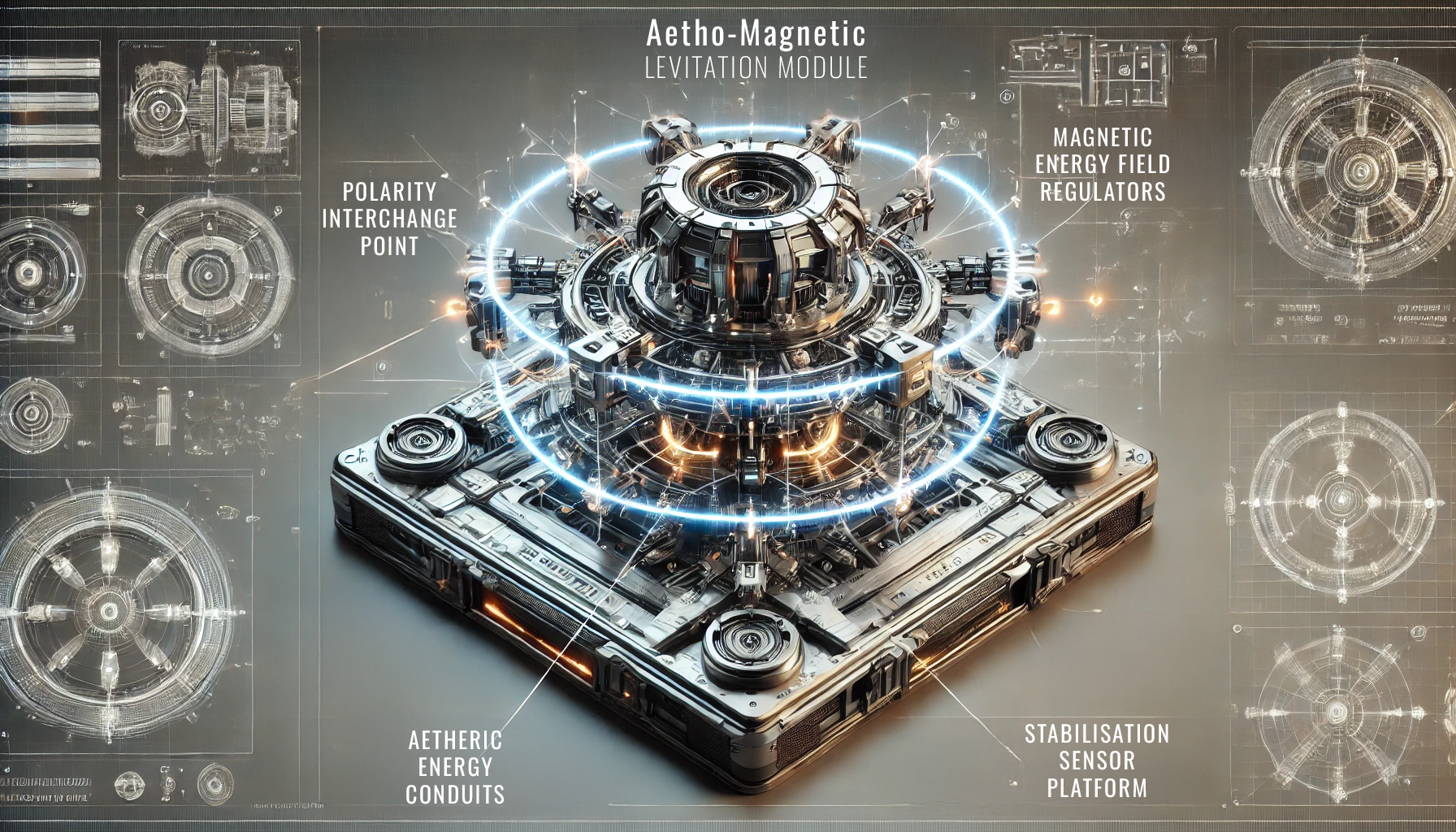Aetho-Magnetics
The technology that drives all vehicles
Aetho-magnetics is the foundation of all modern transportation and movement systems. It enables levitation-based transport without mechanical engines or fuel, using controlled aetho-magnetic fields to suspend and propel vehicles. This system powers trains, trams, buses, cars, bicycles, and lifts, forming the backbone of infrastructure and daily life.
Initially developed by Magi for personal transportation, aetho-magnetic technology was later adapted for industrial and public use. Over the centuries, it has been refined into a highly efficient and stable system, requiring minimal maintenance while providing seamless mobility.
Discovery & Development
Aetho-magnetics was first discovered in 420, when Magi experimenting with aetheric manipulation of magnetic fields observed that objects could be suspended above a surface when the polarity of the magnets was configured to repel. During this period, Magi developed early prototypes of personal transport, including basic cars, bicycles, skateboards, and roller skates.
Over the next two centuries, Magi continued to refine and experiment with the technology, primarily for personal use. One of the most critical advancements during this period was the development of the Anti-Destabilisation System, which ensured that levitated objects remained balanced and stable regardless of weight shifts. This innovation allowed for the creation of vehicles that were not tailored to a specific Magi, making it possible to carry multiple passengers or goods of varying weight without instability.
In 619, a Magi in Thelran created the first industrial transport system to use aetho-magnetics. It was a small mining train, designed to move minerals from a mine to a factory to improve efficiency. This breakthrough demonstrated the potential for non-Magi to use advanced technology, marking the beginning of The Age of Enlightenment.
By 630, trams could be found in most major towns and city centres. By 640, trains connected all major cities, transporting good and materials, and lorries became common in areas where rail infrastructure was impractical. Buses were introduced in 650 to provide transport to regions without train access. Meanwhile, personal cars remained exclusive to Magi until 700, when they became available to the middle class. By 710, bicycles, skateboards, and roller skates, long used by Magi, became widely available to the public as recreational transport.
Mechanics & Function
All aetho-magnetic systems rely on four core functions: levitation, propulsion, braking, and stabilisation. These systems work together to ensure stable, efficient movement with minimal energy loss.
Levitation
Vehicles levitate by engaging a controlled aetho-magnetic field created by Aether, which repels the vehicle body from a specific surface. Trains and trams hover above a single-rail track, while cars and bicycles levitate above their wheels, which remain in contact with the ground. This reduces mechanical strain, improves ride comfort, and ensures ground stability where necessary.
Propulsion
Vehicles move using precise field modulation. The aetho-magnetic field generates a push-pull force by adjusting polarity and field strength, allowing for smooth acceleration and deceleration. With no friction on tracks and minimal resistance in wheeled vehicles, movement is highly efficient and fluid.
Braking
- Current Reversal Braking: The standard braking system reverses the polarity of the aetho-magnetic field, creating controlled resistance that gradually slows the vehicle.
- Emergency Braking: In extreme cases, mechanical clamps engage to bring the vehicle to a complete stop. This feature is rarely used, as standard braking is highly effective under normal conditions.
Anti-Destabilisation System
Vehicles maintain balance and stability through the Anti-Destabilisation System, which ensures that vehicles remain level and stable regardless of speed, load, or external forces. This is achieved through continuous weight sensing and automatic field adjustments to compensate for any shifts in distribution.
Applications
Aetho-magnetics is used in all aspects of daily life, commerce, and industry. The most common applications include:
- Trains and trams: The primary long-distance transport network.
- Buses and cars: Personal and public transportation.
- Rail freight and lorries: Transporting heavy goods where trains are impractical.
- Bicycles, skateboards, and roller skates: Used for recreational travel.
- Lifts and stair lifts: Vertical transport systems.
- Escalators and travelators: Continuous movement transport systems.
- Cranes, gantries, and forklifts: Industrial applications requiring precision movement.
Limitations & Challenges
While aetho-magnetics is highly reliable, it is not without limitations. The most significant challenges include:
- Rail Maintenance: Trains and trams require uninterrupted rail infrastructure. Any damage or obstruction can cause system failures, making maintenance a critical factor.
- Terrain Limitations: In wheeled vehicles, extremely uneven terrain can cause a wheel to strike the undercarriage, potentially damaging the vehicle.
- User Error & Accidents: While the system is inherently stable, accidents still occur due to human error, poor maintenance, or unexpected obstacles.
Despite these limitations, aetho-magnetics remains the most efficient and widely used transport system, having operated for over 300 years with continued refinements.





Comments